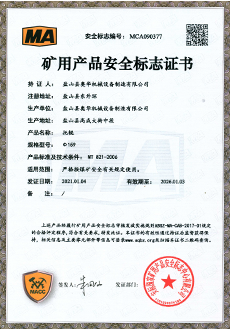 Afrikaans
Afrikaans  Albanian
Albanian  Amharic
Amharic  Arabic
Arabic  Armenian
Armenian  Azerbaijani
Azerbaijani  Basque
Basque  Belarusian
Belarusian  Bengali
Bengali  Bosnian
Bosnian  Bulgarian
Bulgarian  Catalan
Catalan  Cebuano
Cebuano  Corsican
Corsican  Croatian
Croatian  Czech
Czech  Danish
Danish  Dutch
Dutch  English
English  Esperanto
Esperanto  Estonian
Estonian  Finnish
Finnish  French
French  Frisian
Frisian  Galician
Galician  Georgian
Georgian  German
German  Greek
Greek  Gujarati
Gujarati  Haitian Creole
Haitian Creole  hausa
hausa  hawaiian
hawaiian  Hebrew
Hebrew  Hindi
Hindi  Miao
Miao  Hungarian
Hungarian  Icelandic
Icelandic  igbo
igbo  Indonesian
Indonesian  irish
irish  Italian
Italian  Japanese
Japanese  Javanese
Javanese  Kannada
Kannada  kazakh
kazakh  Khmer
Khmer  Rwandese
Rwandese  Korean
Korean  Kurdish
Kurdish  Kyrgyz
Kyrgyz  Lao
Lao  Latin
Latin  Latvian
Latvian  Lithuanian
Lithuanian  Luxembourgish
Luxembourgish  Macedonian
Macedonian  Malgashi
Malgashi  Malay
Malay  Malayalam
Malayalam  Maltese
Maltese  Maori
Maori  Marathi
Marathi  Mongolian
Mongolian  Myanmar
Myanmar  Nepali
Nepali  Norwegian
Norwegian  Norwegian
Norwegian  Occitan
Occitan  Pashto
Pashto  Persian
Persian  Polish
Polish  Portuguese
Portuguese  Punjabi
Punjabi  Romanian
Romanian  Russian
Russian  Samoan
Samoan  Scottish Gaelic
Scottish Gaelic  Serbian
Serbian  Sesotho
Sesotho  Shona
Shona  Sindhi
Sindhi  Sinhala
Sinhala  Slovak
Slovak  Slovenian
Slovenian  Somali
Somali  Spanish
Spanish  Sundanese
Sundanese  Swahili
Swahili  Swedish
Swedish  Tagalog
Tagalog  Tajik
Tajik  Tamil
Tamil  Tatar
Tatar  Telugu
Telugu  Thai
Thai  Turkish
Turkish  Turkmen
Turkmen  Ukrainian
Ukrainian  Urdu
Urdu  Uighur
Uighur  Uzbek
Uzbek  Vietnamese
Vietnamese  Welsh
Welsh  Bantu
Bantu  Yiddish
Yiddish  Yoruba
Yoruba  Zulu
Zulu lagged drum pulley
Understanding Lagged Drum Pulleys A Key Component in Conveyor Systems
In various industrial applications, the efficiency and reliability of material handling systems are critical. One of the essential components in these systems is the drum pulley, particularly the lagged drum pulley. This article explores the significance, functionality, and benefits of lagged drum pulleys in conveyor systems.
What is a Lagged Drum Pulley?
A lagged drum pulley is a cylindrical device that serves as a driving or deflecting mechanism in a conveyor system. It is typically mounted at the ends of a conveyor belt. The term lagged refers to the outer surface of the pulley, which is covered with a material, usually rubber or ceramic, designed to enhance grip and reduce slippage. This lagging allows for improved traction between the pulley and the conveyor belt, which is essential for efficient material transport.
How Lagged Drum Pulleys Work
When a conveyor system operates, the motor-driven drum pulley rotates, which in turn moves the conveyor belt. The lagging on the pulley increases the coefficient of friction between the pulley and the belt, ensuring that the belt adheres properly to the pulley as it moves through the system. This is especially crucial during heavy load operations where slippage could lead to inefficiencies, increased wear on components, and potential breakdowns.
Benefits of Lagged Drum Pulleys
lagged drum pulley

1. Enhanced Traction The primary advantage of lagged drum pulleys is the increased traction they provide. This translates into better performance, particularly in high-demand environments where loads can be substantial.
2. Reduced Slippage By effectively minimizing slippage, lagged pulleys extend the lifespan of both the pulley itself and the conveyor belt. This not only reduces maintenance costs but also enhances the overall efficiency of the material handling system.
3. Improved Load Distribution Lagged pulleys help distribute the load more evenly across the conveyor system, which can lead to less wear and tear on the mechanical components and the belt.
4. Versatility Lagged drum pulleys can be utilized in various applications, from mining and agriculture to manufacturing and logistics. Their adaptability to different environments and materials makes them an indispensable part of modern industry.
5. Cost-Effectiveness Although there may be an initial investment in high-quality lagged drum pulleys, the long-term savings in maintenance, downtime, and replacement parts make them a cost-effective solution for conveyor systems.
Conclusion
Lagged drum pulleys play a crucial role in the effectiveness of conveyor systems. By enhancing traction, reducing slippage, and improving load distribution, they significantly contribute to the reliability and efficiency of material handling processes. As industries continue to evolve and demand more from their equipment, the importance of incorporating advanced components like lagged drum pulleys will undoubtedly increase. In summary, for anyone involved in the management of conveyor systems, understanding the function and benefits of lagged drum pulleys is essential to maximizing operational efficiency and minimizing costs.
-
Revolutionizing Conveyor Reliability with Advanced Rubber Lagging PulleysNewsJul.22,2025
-
Powering Precision and Durability with Expert Manufacturers of Conveyor ComponentsNewsJul.22,2025
-
Optimizing Conveyor Systems with Advanced Conveyor AccessoriesNewsJul.22,2025
-
Maximize Conveyor Efficiency with Quality Conveyor Idler PulleysNewsJul.22,2025
-
Future-Proof Your Conveyor System with High-Performance Polyurethane RollerNewsJul.22,2025
-
Driving Efficiency Forward with Quality Idlers and RollersNewsJul.22,2025





























